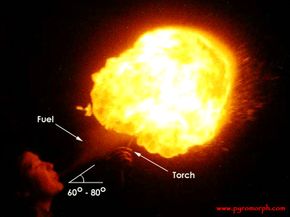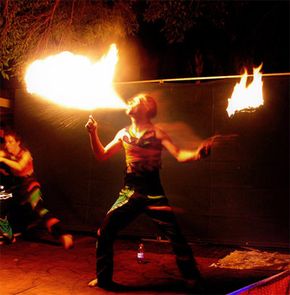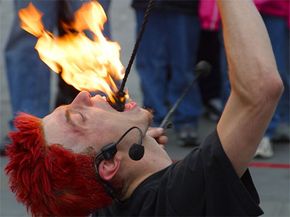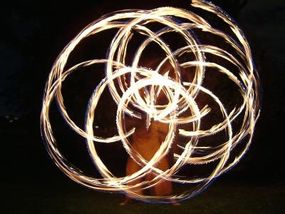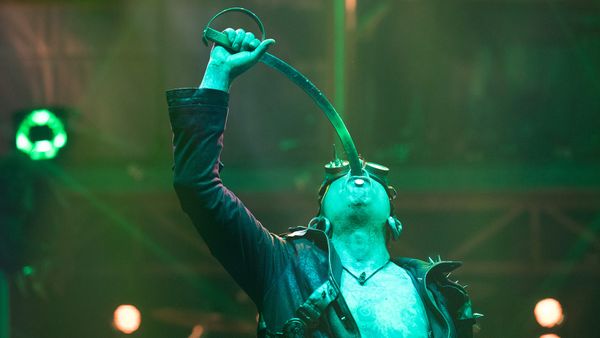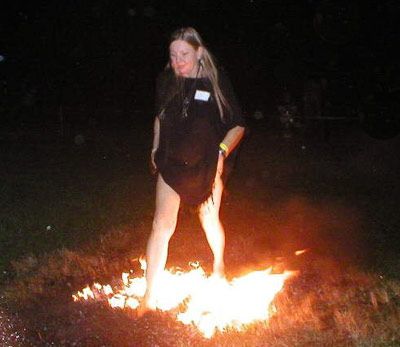Jugglers, magicians, acrobats and sideshow performers have something in common -- they make astounding or difficult tricks look very easy. Fire breathers, who often specialize in one of these forms of entertainment, amaze people because they seem to exhale a plume of fire as though it were as easy as taking a breath.
But fire breathing is the most dangerous of all the fire arts. People who breathe fire professionally have to go to great lengths to keep themselves and their audiences safe. And since the process involves fire and flammable, toxic fuel, fire breathing accidents can be deadly.
Advertisement
To get an inside look at how fire breathing works, we interviewed two fire breathers. Mike Garner is a juggler and vaudevillian performer who started breathing fire in 1993.
Our second performer uses the stage name Pele, and she incorporates a number of sideshow acts in her shows. She had about ten years of fire stunt experience at the time of our interview. In this article, these performers will help explain the basics of fire breathing, the potential dangers and the safety measures that protect fire breathers and their audiences.
Advertisement

